Introduction
- With the increase in human population, the availability of many resources is becoming scarce as the days go by.
- Individuals have the increased need to acquire basic needs, own property and live a luxurious life.
- Due to this fact, there has been an increase in the demand for goods and services over the years (Heizer and Render, 2011).
- Owning a home is among the main dreams of every adult in the world.
- This has however proven to be difficult due to the rise in the cost of factors of production.
- This includes factors such as land, raw materials and labor.
- As a result, building houses has become an expensive activity (LCH, 2011).
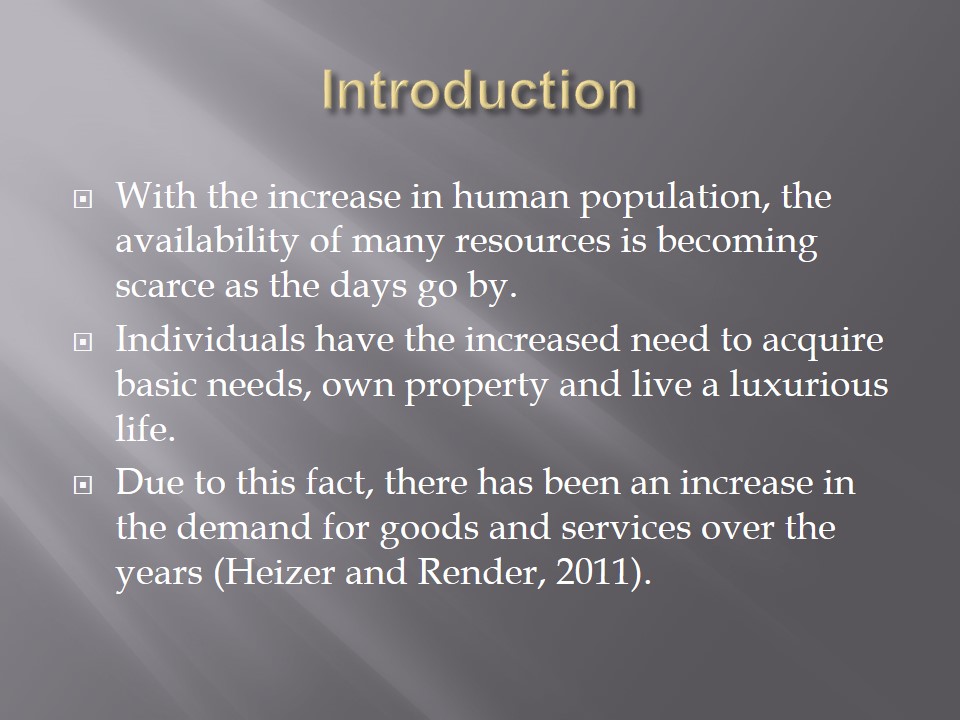
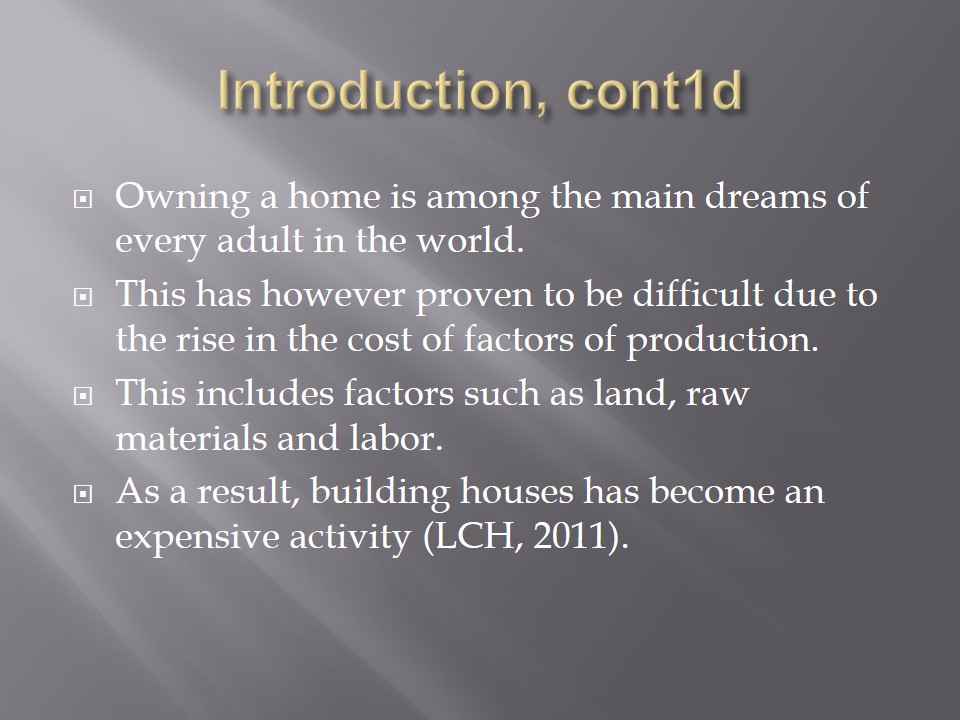
Interlocking Bricks
- However, there has been an advancement on the process of building and construction.
- The use of interlocking bricks has tremendously reduced the cost of building.
- It is cheap to buy or manufacture these bricks as compared to buying stones for construction.
- In addition, they require the use of minimal amount of cement.
- This in turn reduces the cost of construction.
- Other advantages of using interlocking bricks for construction include:
- They produces relatively strong buildings as compared to other modes of construction.
- The buildings that are constructed using this technology are more attractive as compared to buildings constructed using other methods.
- The technology is environment friendly.
- It is not labor intensive.
- Construction of building takes a shorter time.
- This new technology commenced to be used in the mid 1990`s (Ndirangu, 2009).
- However, its mass production commenced in the 21 century.
- Many buildings in both rural and urban centers have been constructed using the technology.
- Constructors and developers have discovered the benefits of this new technology hence its massive application.
- These bricks are manufactured with the use of special machines.
- These machines mix and compress sand and cement together in appropriate ratios.
- The mixture is then dried under intense heat, producing bricks that are hard and strong.
- These bricks are manufactured in different shapes and designs depending on the taste and preference of the client.
- In construction, the bricks are arranged in such a way that they interlock with each other, producing a strong wall.
- Several organizations and building and construction companies have adopted this new method of construction.
- They include:
- Low Cost Housing International.
- Hydraform PVT Limited (India).
- UN Habitat.
- These companies enjoy the following benefits:
- Reduced competition since their market is not flooded.
- Lower costs of production.
- Availability of cheap labor (it requires mostly unskilled labor).
- Readily available market.
- High levels of profitability.
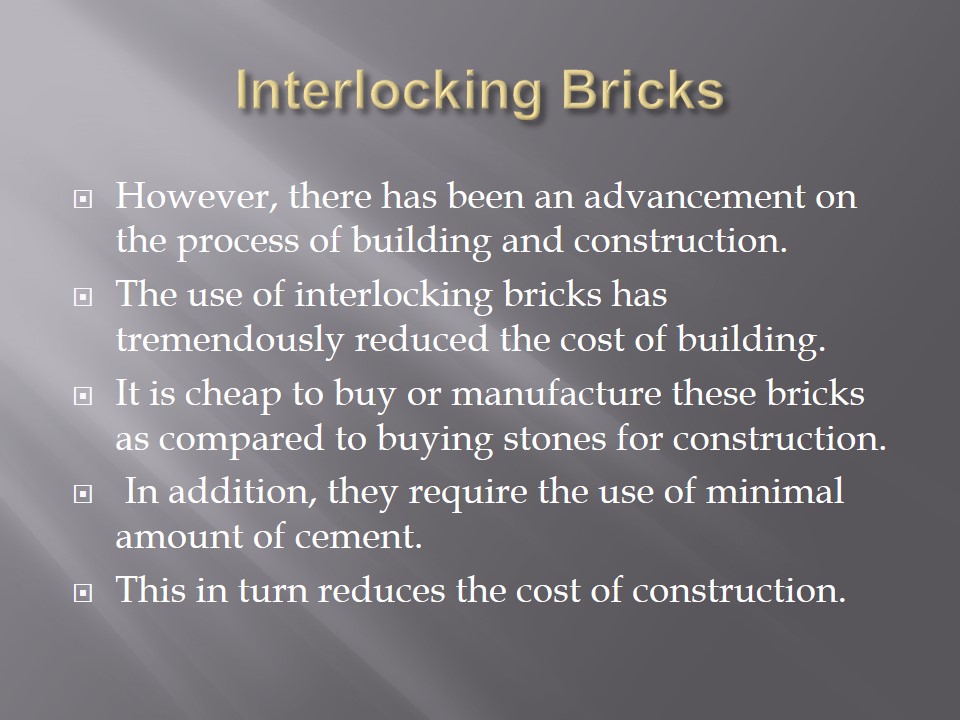
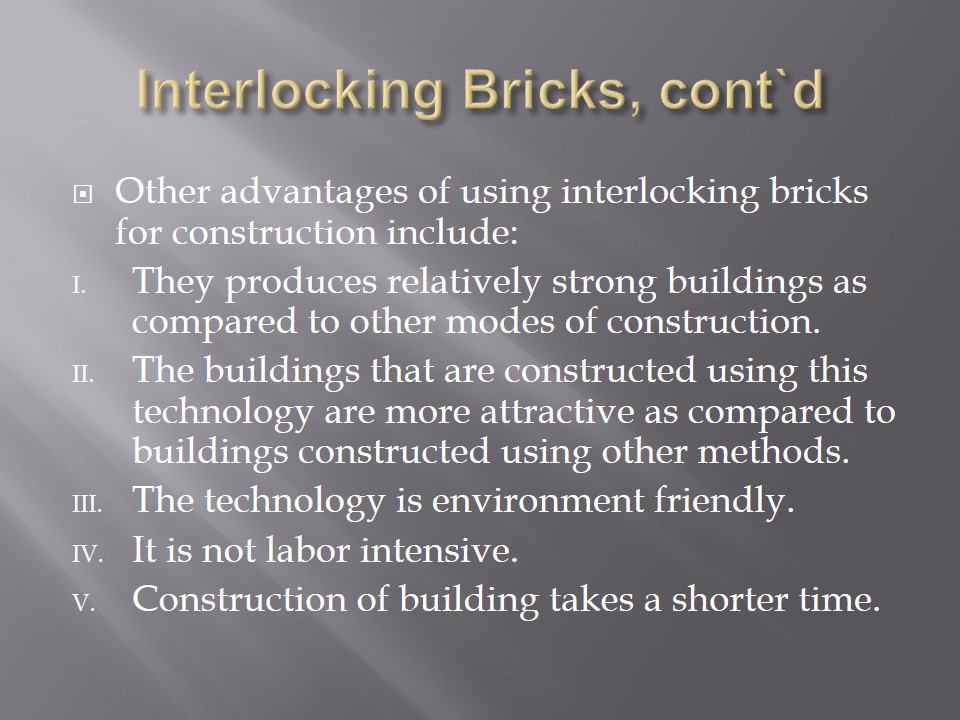
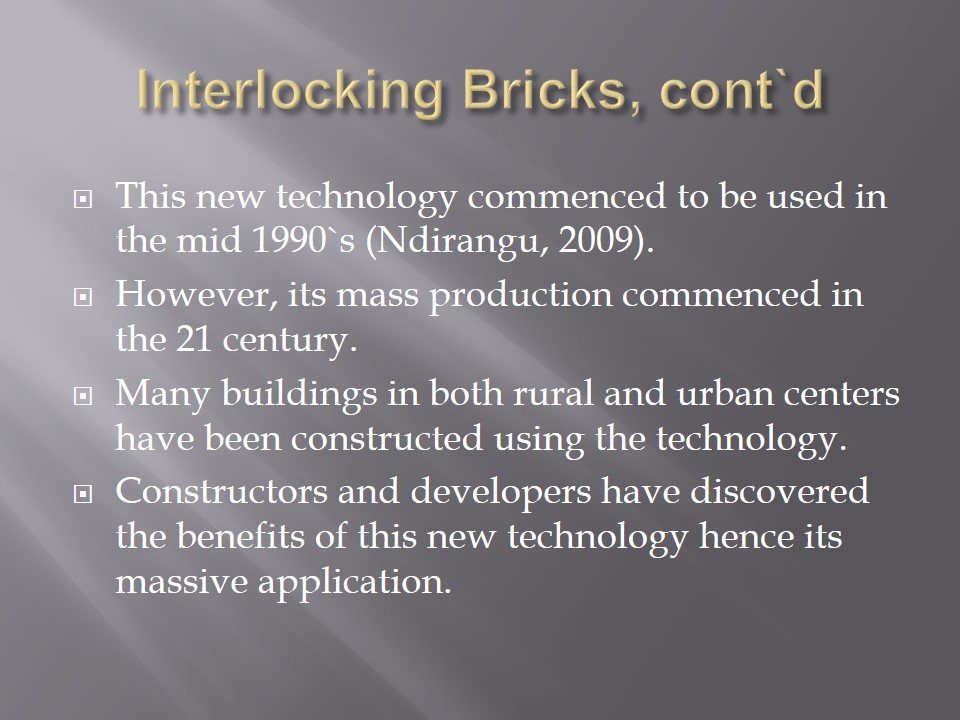
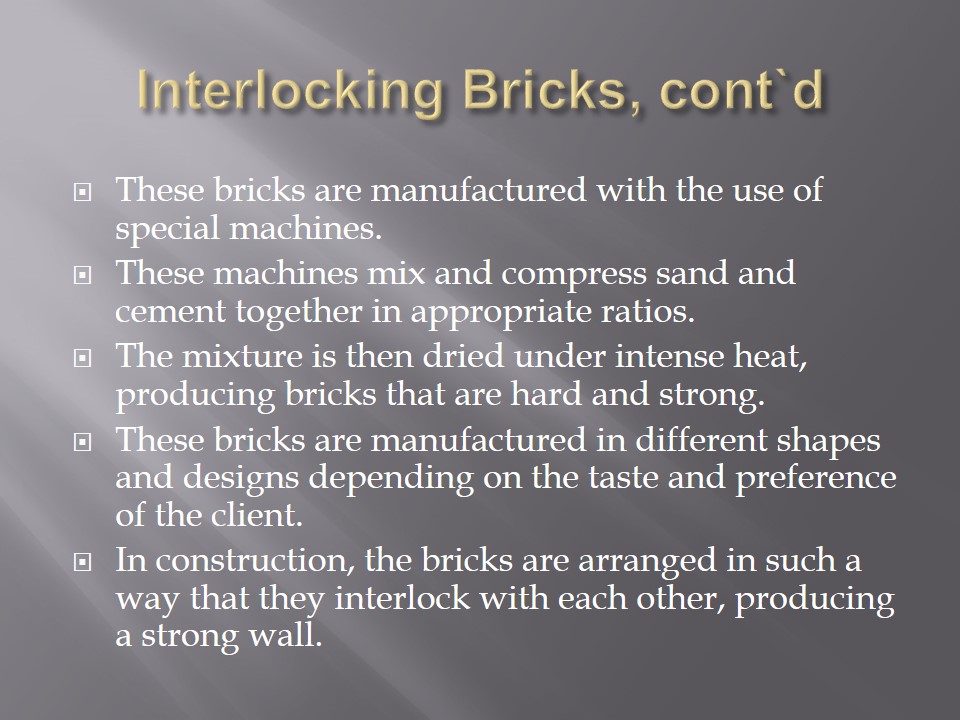
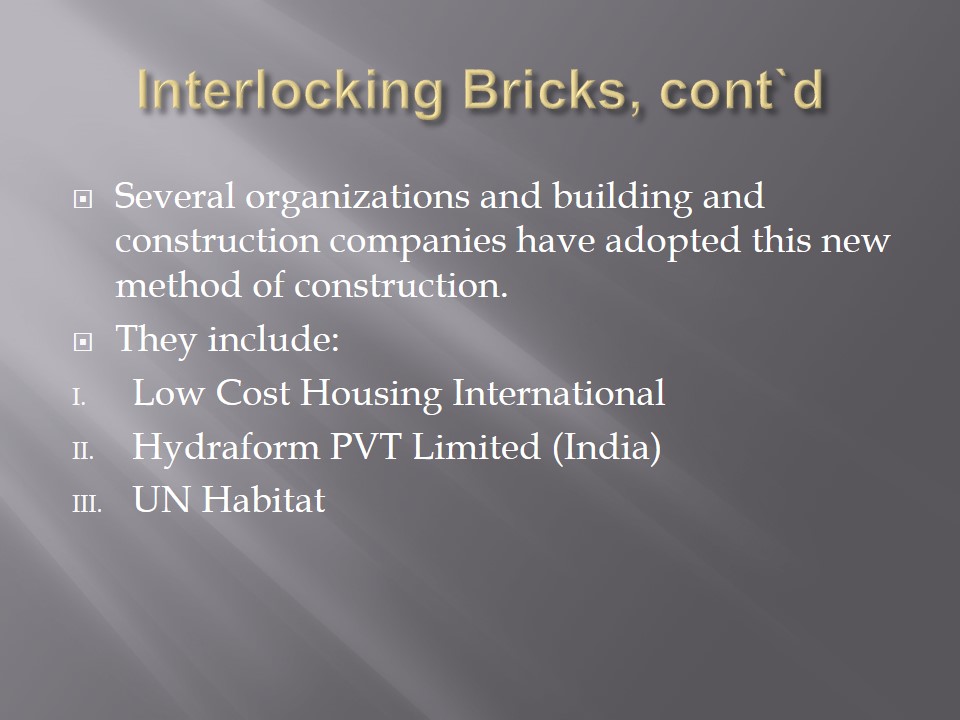
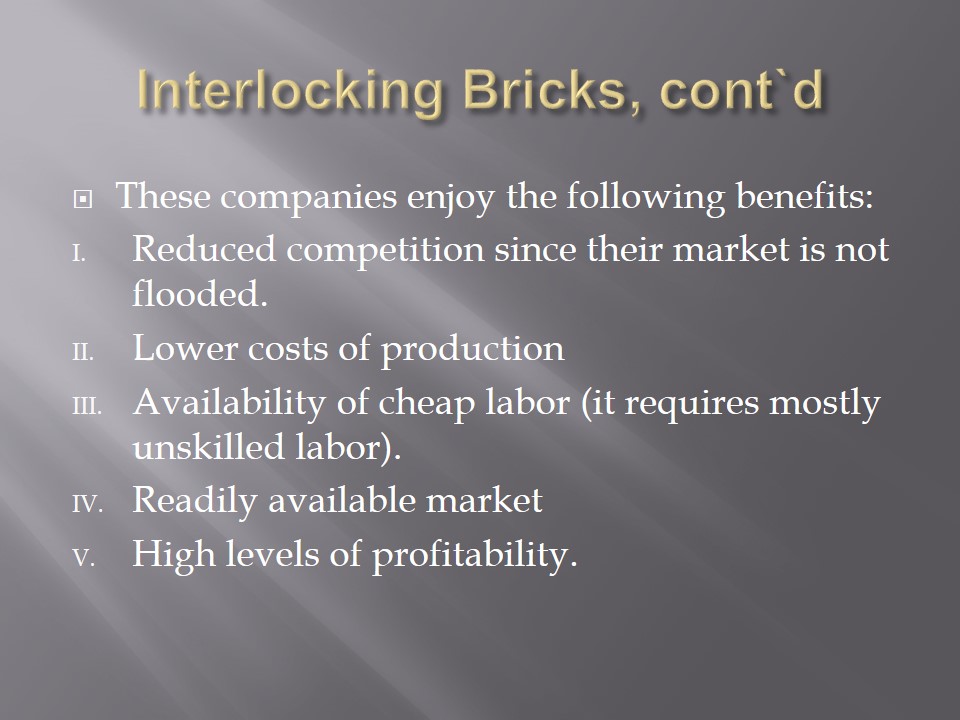
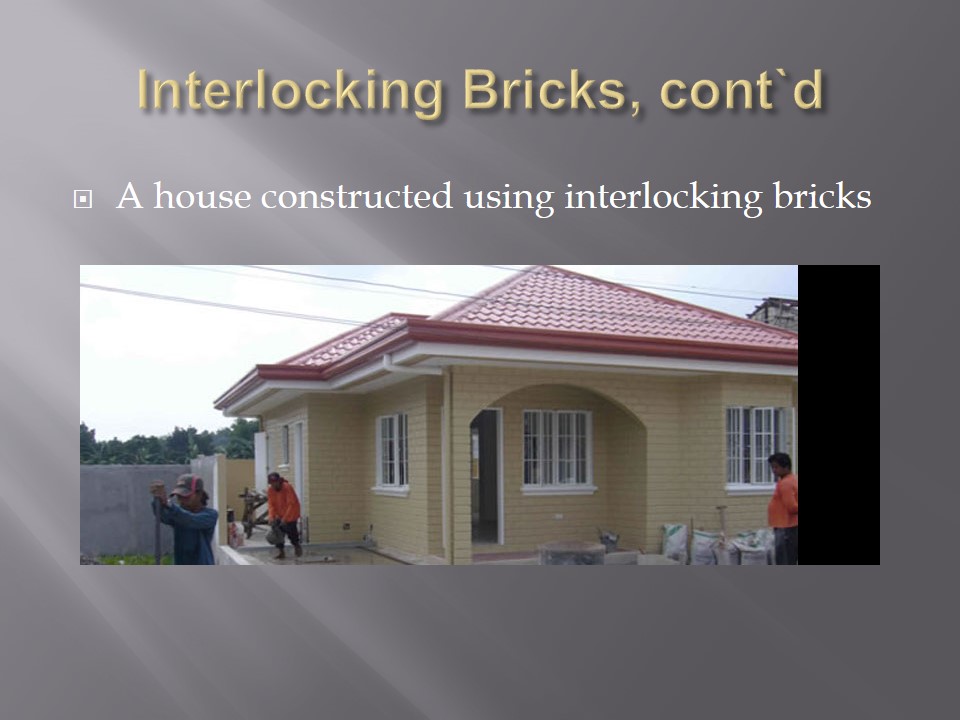
References
Heizer, J., & Render, B. (2011). Operations management. Boston, MA: Prentice-Hall.
LCH. (2011). Interlocking Bricks. LCH International. Web.
Ndirangu, M. (2009). Building and Construction in the 21st Century. Nairobi: Longhorn.